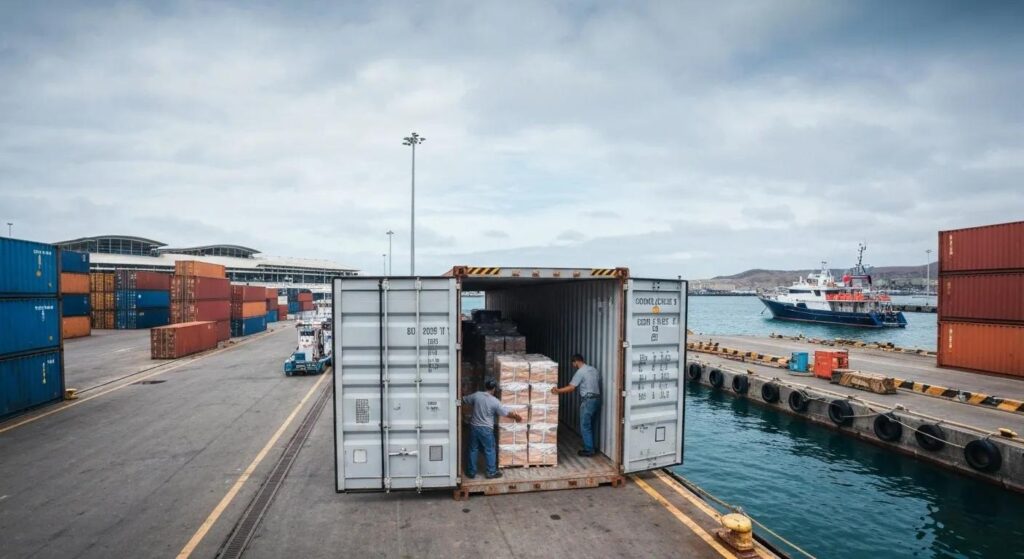Your Guide to Stress-Free Relocation in Hawaii

Your Guide to Stress-Free Relocation in Hawaii
Each year, over 72,000 individuals and families make the exciting transition to Hawaii, a process that involves intricate ocean freight, seamless inter-island transfers, thorough local inspections, and precise scheduling. These elements demand expert coordination and crystal-clear pricing. In this comprehensive guide, we’ll walk you through the essential cost components, introduce you to top-tier relocation providers, highlight potential logistical challenges, outline crucial planning steps, and cover important post-move considerations specific to moving to the Aloha State. With Hercules Moving Solutions’ proven “Long Distance Moving Solutions,” you can count on expertly managed processes and transparent estimates to transform your island relocation into a smooth and stress-free experience.
What Are the Key Costs Involved in Moving to Hawaii?

Relocating to Hawaii is a multifaceted endeavor that combines ocean transport, ground handling, regulatory fees, and local delivery charges. A clear understanding of each of these components is vital for accurate budgeting and for avoiding unexpected expenses as you move your home or business across the vast Pacific. For more tips, check out our guide to moving and storage in Hawaii.
This information provides specific cost estimates for container shipping to Hawaii, directly supporting our discussion on shipping expenses.
Smaller households often find consolidated loads to be a cost-effective solution, while larger moves typically benefit from full-container rates. It’s essential to factor in transit times when scheduling your move to ensure your belongings arrive precisely when you do.
What Are the Pricing Factors for Inter-Island Moving in Hawaii?
Inter-island moves are influenced by several key factors, including the distance between islands, the weight of your cargo, vessel availability, seasonal demand, and specific handling requirements.
- The distance separating the islands directly impacts fuel surcharges and transit schedules.
- The total weight of your shipment dictates the necessary vessel size and the labor required for handling.
- During peak tourist seasons, rates may increase due to limited freight capacity.
- Specialty items, such as pianos or antiques, necessitate custom crating and specialized handling procedures.
Understanding these variables highlights the importance of booking well in advance and providing detailed weight estimates to secure the most competitive rates for your inter-island transfers.
What Are Hidden and Additional Costs to Consider When Moving to Hawaii?
Beyond the base shipping fees, anticipate additional expenses such as insurance premiums, potential storage fees, port handling charges, agricultural inspection costs, and local delivery permits.
- Insurance premiums are determined by the declared value of your belongings and the level of coverage selected.
- Short-term storage at ports or dedicated warehouses incurs daily or monthly fees.
- USDA agricultural inspections and potential fumigation are crucial for protecting Hawaii’s unique ecosystem.
- Port handling and customs fees encompass services like unloading, documentation processing, and terminal charges.
By accounting for these potential extras in your moving budget, you can eliminate last-minute surprises and ensure a clear path to settling into island life. For a detailed cost breakdown and a complimentary estimate, we invite you to visit our Free Moving Quote for Hawaii page.
Which Are the Best Hawaii Moving Companies for Long Distance Relocation?
How to Evaluate Reliable Long Distance Movers for Hawaii?
When selecting a mover for your Hawaii relocation, it’s essential to assess their credentials, network reach, customer feedback, and licensing:
- Always confirm their USDOT and FMCSA registration numbers.
- Verify that they carry comprehensive insurance and liability coverage.
- Review up-to-date customer testimonials to gauge their track record for on-time delivery.
- Check if they have local island offices or established warehouse partnerships.
These criteria will help ensure that your chosen provider is equipped to handle marine shipping, inter-island transfers, and final delivery with the utmost professionalism and care.
What Services Do Top Hawaii Moving Companies Offer?
Most leading relocation specialists offer a comprehensive suite of services, including:
- Full-service packing and custom crating for all household goods.
- Secure container shipping and flexible consolidation options.
- Expert scheduling of inter-island vessel transport and freight handling.
- Specialized vehicle transport, including both enclosed and roll-on/roll-off services.
- Convenient short- and long-term storage solutions at island facilities.
- Thorough unpacking and debris removal services upon delivery.
These all-inclusive service packages are designed to streamline complex, multi-leg moves and minimize the coordination required on your part.
What Are the Unique Logistics Challenges of Moving to Hawaii?
How Does Ocean Freight Impact Moving Household Goods to Hawaii?
Ocean freight operations are governed by container types, vessel schedules, and consolidation points. Major carriers typically consolidate shipments at West Coast ports before the approximately 2,600-mile voyage. Factors such as weather conditions and port congestion can influence transit times. Planning your move around established shipping windows and booking early are key strategies for stabilizing timelines and ensuring your belongings arrive when you need them.
What Are the Requirements for Inter-Island Transportation?
Inter-island transfers necessitate careful coordination of vessel schedules, accurate weight declarations, and specific handling protocols.
Adhering to proper labeling and packaging specifications is crucial for preventing delays at island ports and ensuring a smooth onward delivery to your final destination.
What Agricultural Inspections and Regulations Affect Hawaii Moves?
Hawaii maintains stringent biosecurity measures to protect its unique environment:
- All household items are subject to USDA inspection to ensure they are free of soil and plant material.
- Wooden crates may require fumigation or heat treatment.
- For pet imports, specific health certificates, microchipping, and approved quarantine plans are mandatory.
Information for Travelers From Hawaii to the U.S. Mainland, Alaska, or Guam | Animal and Plant Health Inspection Service - usda aphis
This resource clarifies the agricultural regulations for items being transported from Hawaii, which is essential information regarding inspections and compliance.
Strict adherence to these regulations helps safeguard Hawaii’s precious local agriculture and prevents potential hold-ups that could extend your moving schedule.
How Can You Plan a Smooth Long Distance Move to Hawaii?
What Are the Essential Steps in a Hawaii Moving Checklist?
- Begin by decluttering and downsizing any unwanted items to minimize your shipping volume.
- Obtain precise weight and volume estimates from your dedicated moving consultant.
- Schedule your container booking approximately 8–12 weeks prior to your desired shipping date.
- Complete all necessary agricultural and customs paperwork well in advance of your move.
- Confirm your island delivery windows and finalize all details for local transport.
Following this structured approach will set clear expectations and ensure that every task, from mainland departure to Hawaiian arrival, is meticulously managed.
How Should You Pack and Inventory for a Hawaii Move?
Utilize sturdy, moisture-resistant boxes for packing, and clearly label each one with its contents, the destination room, and any specific handling instructions. Maintain a detailed digital inventory, complete with photographs of high-value items, to simplify any potential claims process and expedite unpacking upon arrival.
What Documents Are Needed for Hawaii Relocation?
It’s crucial to prepare and organize the following essential documents:
- Your moving company contract and bill of lading.
- A detailed shipping manifest that itemizes the value of your goods.
- Your vehicle’s title and registration for auto transport.
- Completed USDA and customs inspection clearance forms.
- Proof of residency and documents for your driver’s license application.
Having these files readily accessible will prevent administrative delays and contribute to a stress-free delivery process.
What Should You Know About Life After Moving to Hawaii?
How Does the Cost of Living Affect New Residents in Hawaii?
Hawaii’s cost of living is notably higher than the national average, with expenses for groceries potentially exceeding it by up to 70 percent and general goods by around 28 percent. Careful budgeting for elevated utility and transportation costs is essential for ensuring financial comfort as you embrace island life.
Cost of Living in Hawaii in 2025 - HiEstates
This citation provides the most current data available on Hawaii’s cost of living index, which is vital for understanding the financial landscape of moving to the islands.
How Do You Register Your Vehicle and Get a Driver’s License in Hawaii?
Registering a vehicle and obtaining a Hawaii driver’s license involves the following steps:
- Undergo emission and safety inspections at an authorized station.
- Submit your mainland title or registration certificate.
- Provide proof of identity, residency, and your Social Security number.
- Pay the required registration fees and license issuance charges.
How to Register a Car in Hawaii: Complete 2025 Guide
Registering a car in Hawaii requires a few extra steps compared to many other states, especially if you’re relocating from the mainland. Once your vehicle arrives on the islands, you’ll need to present the shipping documentation, current out-of-state registration, proof of ownership, and a Hawaii vehicle inspection certificate at your local county DMV office. New residents are generally required to register their vehicles within 30 days of arrival. Fees vary by county, and you may also need to pay a weight tax in addition to the standard registration costs. Planning ahead by gathering your paperwork and scheduling an inspection will make the process smoother and help you stay compliant with Hawaii’s transportation regulations.
Completing these procedures within 30 days of your arrival ensures compliance with all state regulations.
What Are the Requirements and Tips for Moving with Pets to Hawaii?
Relocating pets to Hawaii requires strict adherence to the state’s comprehensive animal import program:
- Obtain an official import permit from the Department of Agriculture.
- Ensure all rabies vaccinations are up-to-date and that your pet is microchipped.
- Arrange for either approved quarantine or a six-month pre-arrival protocol.
- Utilize sturdy, airline-approved crates and confirm flight bookings well in advance.
Meticulous planning of every detail will help you avoid unexpected quarantine issues and allow your beloved pets to settle into island life smoothly.
Your island relocation journey will be significantly smoother when you partner with experienced professionals who possess a deep understanding of marine shipping, inter-island transfers, and local regulations. For firsthand accounts of our dependable service, we encourage you to explore our Customer Reviews – Hercules Moving Solutions. As you prepare for this exciting new chapter under the Hawaiian skies, secure a fast, detailed estimate by requesting your “Fast Moving Quote” today. You can also find our branch locations and read live feedback on “Hercules Moving Solutions on Google Maps.”
Embark on your seamless Hawaii move with unwavering confidence and clarity—trusted expertise is ready to guide you every step of the way.